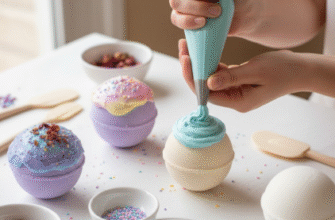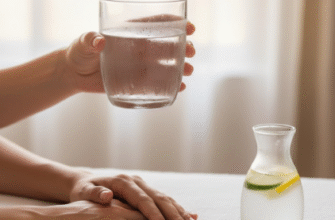Tired of lip products packed with ingredients you can’t pronounce? There’s something truly satisfying about creating your own beauty essentials, especially when they harness the vibrant power of nature. Lip stains offer a beautiful wash of color that looks effortlessly natural, like your lips but better. Instead of settling for store-bought versions, why not dive into your kitchen and whip up a custom lip stain using simple, wholesome ingredients? It’s easier than you think, incredibly rewarding, and allows you complete control over the color and components.
Making your own natural lip stain means you’re ditching synthetic dyes, preservatives, and potential irritants often found in commercial cosmetics. You’re swapping mystery chemicals for the pure, beautiful pigments found in fruits and vegetables. Think luscious berries and earthy beets! This approach is not only kinder to your skin but also often more sustainable, reducing packaging waste and reliance on complex manufacturing processes. Plus, imagine the fun of experimenting with different natural sources to find your perfect signature shade!
Why Embrace Nature’s Palette for Your Pout?
The primary draw of DIY natural lip stains is transparency. You know exactly what you’re putting on your lips – arguably one of the most absorbent areas of your body. Commercial lip stains can contain a cocktail of artificial colorants like Red 40 or Yellow 5, parabens, phthalates, and heavy metals. While regulated, long-term exposure or sensitivities can be a concern for many. Natural ingredients, primarily fruits and vegetables, offer color derived directly from plant pigments like anthocyanins (in berries) and betalains (in beets). These compounds often come with bonus antioxidant properties, although the amount absorbed through a lip stain is likely minimal.
Beyond safety, customization is a huge plus. Want a sheer pink? Try raspberries. Craving a deeper wine shade? Blackberries or beets are your friends. You can mix different natural colorants to achieve nuanced shades impossible to find off the shelf. It’s your personal lip color lab! This creative process connects you more deeply to your beauty routine and the natural world.
Gathering Your Natural Ingredients
Creating your lip stain requires two main components: the color source and the base/carrier. The base helps to apply the color smoothly and can add moisturizing properties and longevity.
Potential Color Sources:
- Beetroot: Offers a potent, deep pink to reddish-purple stain. You can use fresh beet juice or beetroot powder. Powder provides a more concentrated, consistent color.
- Berries: Raspberries and Strawberries yield lovely pinks and light reds. Blackberries and Blueberries provide deeper, purplish, or berry tones. Pomegranates give a vibrant, rich red. Use fresh or frozen (thawed) berries, or pure fruit juice/powder.
- Hibiscus Powder: Dried hibiscus flowers, ground into a powder, can create beautiful pink and red hues when infused.
- Alkanet Root Powder: Known for its deep red-purple color, often used in natural dyeing. Use sparingly as it’s quite potent.
Base and Enhancing Ingredients:
- Vegetable Glycerin: A clear, slightly sweet liquid that acts as a humectant (draws moisture) and helps the stain adhere to lips. It provides a smooth glide. Food-grade is essential.
- Carrier Oils (Optional, use sparingly): A tiny drop of Coconut Oil, Sweet Almond Oil, or Jojoba Oil can add moisture, but too much will prevent the stain from setting properly and reduce its ‘staining’ power. Fractionated coconut oil stays liquid and is less greasy.
- Aloe Vera Gel (Pure): Can be used as a light base, offering hydration. Ensure it’s pure gel without additives.
- Vitamin E Oil (Optional): Acts as a natural preservative, extending the (still short) shelf life slightly, and adds moisturizing benefits. A tiny amount is sufficient.
- Distilled Water or Rosewater: Can be used to adjust consistency, especially when working with powders.
Verified Tip: Always choose food-grade ingredients whenever possible, especially for items like vegetable glycerin or any powders you might use. Since lip products are inevitably ingested in small amounts, ensuring they are safe for consumption is crucial for your peace of mind and well-being.
Crafting Your Custom Lip Stain: Recipes & Methods
Now for the fun part – making the stain! Remember that natural ingredients vary in pigment intensity, so experimentation is key. Start with small batches until you perfect your desired shade and consistency.
Recipe 1: Vibrant Beetroot Lip Stain (Powder Method)
This method offers good control over color concentration and is less messy than using fresh juice.
Ingredients:
- 1/2 teaspoon Beetroot Powder (food-grade)
- 1 teaspoon Vegetable Glycerin
- Optional: 1 tiny drop Vitamin E oil
- Optional: Distilled water or Rosewater (a few drops, if needed for consistency)
Instructions:
- In a small, clean dish (like a ceramic ramekin or glass bowl), combine the beetroot powder and vegetable glycerin.
- Stir thoroughly with a small spatula or clean spoon until the powder is fully incorporated and there are no clumps. Aim for a smooth, slightly thick liquid.
- If the mixture is too thick, add distilled water or rosewater one drop at a time, stirring well after each addition, until you reach your desired consistency. It should be thin enough to spread easily but thick enough to cling to the lips.
- If using, stir in the tiny drop of Vitamin E oil.
- Transfer the mixture to a small, clean, airtight container. A rollerball bottle or a small lip balm pot works well.
Recipe 2: Juicy Berry Lip Stain (Fresh Fruit Method)
This method uses the natural juices of berries for a fresh, fruity stain.
Ingredients:
- 2-3 tablespoons Fresh or Thawed Berries (e.g., raspberries, blackberries, or a mix)
- 1 teaspoon Vegetable Glycerin
- Optional: 1/2 teaspoon Aloe Vera Gel (for extra hydration)
- Optional: 1 tiny drop Vitamin E oil
Instructions:
- Wash the berries thoroughly.
- Place the berries in a small bowl and mash them well using a fork or muddler to release their juice.
- Strain the mashed berries through a fine-mesh sieve or cheesecloth placed over another clean bowl. Press down firmly on the solids to extract as much juice as possible. Discard the solids (or save them for smoothies!). You should aim for about 1-2 teaspoons of concentrated juice.
- Add the vegetable glycerin to the berry juice and stir well.
- If using, incorporate the aloe vera gel and/or Vitamin E oil, mixing until smooth.
- The consistency should be like a thin serum. If it feels too watery, you can gently heat the mixture in a double boiler (or a heatproof bowl over simmering water) for a few minutes to slightly reduce it – watch carefully to avoid burning. Let it cool completely.
- Pour the finished stain into your chosen clean, airtight container.
Recipe 3: Rich Pomegranate Lip Stain
Pomegranate offers a beautiful, sophisticated red hue.
Ingredients:
- 1/4 cup Pomegranate Seeds (or 2-3 tablespoons pure pomegranate juice)
- 1 teaspoon Vegetable Glycerin
- Optional: 1 tiny drop Vitamin E oil
Instructions:
- If using seeds, place them in a sturdy bowl and crush them thoroughly to release the juice. Alternatively, pulse them briefly in a blender and strain. If using juice, you can skip this step.
- Strain the juice through a fine-mesh sieve or cheesecloth, pressing to extract maximum liquid. You want about 1-2 teaspoons of vibrant juice.
- For a slightly more concentrated color and better staying power, you can gently simmer the pomegranate juice in a small saucepan over low heat for 5-10 minutes to reduce it slightly. Let it cool completely before proceeding.
- Combine the cooled pomegranate juice (reduced or fresh) with the vegetable glycerin.
- Stir in the optional Vitamin E oil.
- Mix well until everything is combined into a smooth liquid.
- Transfer to a clean, airtight container.
Tips for Success and Customization
- Layering is Key: Natural stains are often sheerer than commercial ones. Apply one layer, let it dry slightly (a minute or two), and apply another for more intense color.
- Exfoliate First: For the smoothest application and most even color, gently exfoliate your lips beforehand to remove any dry skin. A simple sugar and oil scrub works wonders.
- Adjusting Intensity: Want more color? Increase the ratio of pigment (powder/juice) to base (glycerin/aloe). Want it sheerer? Add more base or a drop of distilled water.
- Adding Natural Scent/Flavor (Optional): A tiny drop of food-grade vanilla extract or peppermint essential oil (ensure it’s safe for ingestion and properly diluted – 1 drop per batch is usually plenty) can add a pleasant aroma. Always patch test essential oils first.
- Consistency Matters: If your stain feels too thin, add a bit more powder (if using) or try reducing the juice slightly. If too thick, add a drop more glycerin or distilled water.
Important Safety Note: Always perform a patch test before applying any new DIY creation to your lips! Apply a small amount of the finished stain to your inner wrist or elbow. Wait 24 hours to check for any signs of irritation, redness, or allergic reaction. Natural doesn’t automatically mean allergy-free; some people can be sensitive to berries, beets, or other plant ingredients.
Application, Storage, and Shelf Life
Applying your natural lip stain is simple. Use a clean fingertip, a Q-tip, or pour it into a rollerball applicator for easy gliding. Start in the center of your lips and blend outwards. Allow it to dry fully for the best staining effect. Since these recipes lack strong synthetic preservatives, their shelf life is limited.
Storage: Always store your homemade lip stain in a clean, airtight container. Keep it refrigerated to maximize its freshness and inhibit bacterial growth. Shelf Life: Expect your natural lip stain to last approximately 1-2 weeks when stored correctly in the refrigerator. If you notice any change in smell, color, or consistency, discard it immediately. This is why making small batches more frequently is often the best approach.
Be mindful that natural pigments like beet and berry juice can stain fingers and clothes quite effectively! Apply carefully and wash your hands immediately after application.
Embrace Your Inner Alchemist
Creating your own natural lip stain is a delightful journey into the world of DIY beauty. It connects you with the simple potency of nature’s colors and allows you to craft a product perfectly suited to your preferences and values. Don’t be afraid to experiment with different fruit and vegetable combinations, adjust ratios, and find the textures and shades that make you feel fabulous. Enjoy the process, savor the natural results, and wear your custom-created color with pride!








